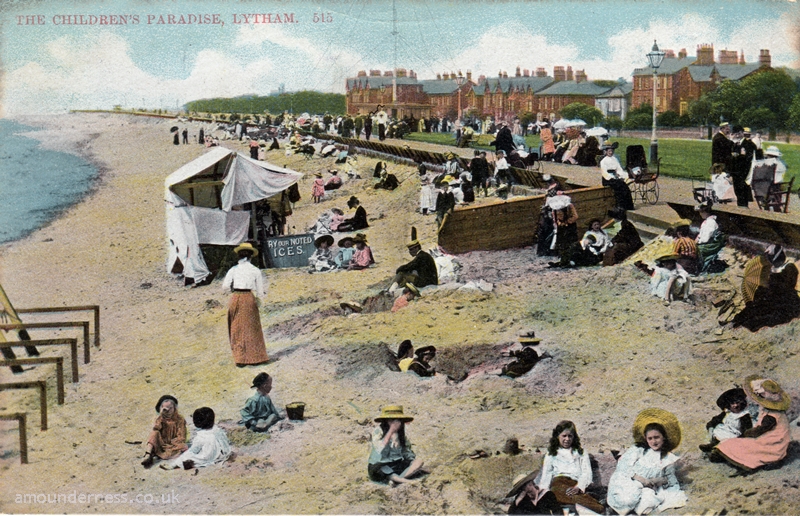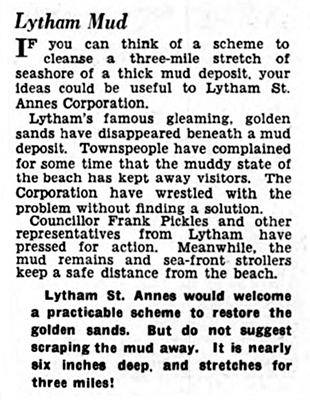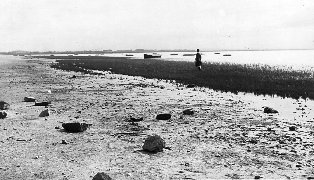|

Paddling at Lytham.

West, Beach Lytham.

East Beach, Lytham.
Lytham, Ansdell, and Fairhaven once boasted beautiful golden beaches but
within living memory they have changed beyond all recognition.

Lancashire Evening Post - Saturday 18 September 1937

Mud
& grass on Lytham Beach in the early 1950s.
In the 1930s silt started to accumulate on Lytham Beach, forming a thick
layer of mud. This "mud menace" was compounded in the 1940s when Spartina grass seeded itself
in the silt deposits. The beaches at Lytham and Fairhaven are now covered with this highly
invasive grass, which continues to spread along the coast.

Fairhaven Beach viewed from St Annes, October 2020.
About 2010 several groups joined forces to help prevent the grass from
completely taking over this section of the beach and to stop the rampant colonisation of the
main tourist beaches at St Annes. This involved Fylde Borough Council, St Annes Chamber of
Trade, the Community Pay Back Scheme, and volunteers.
It was backbreaking work. The tufts of grass and the roots had to be dug out
by hand, carried off the beach and disposed of. The volunteers were successful but
unfortunately, over the past decade, the relentless march of the grass has continued, and once
again it threatens the sands at St Anne's. The beaches are of course vital to tourism and the
local economy.
The Root Cause?
All these environmental changes appear to be rooted in Preston Corporation's
construction, between the 1880s and early 1900s, of their new channel - see the "Ribble Navigation" page - and the planting of Spartina grass along
the Ribble banks.
Lytham St Annes and Southport experienced identical problems over the same
period - the silting up of channels, rising beach levels and silt on the beaches followed by an
infestation of Spartina grass. In the 1980s Fylde Borough Council and Sefton Borough Council
commissioned a three-year survey and the results were published early in 1987. On the page
"Sand, Silt & Spartina Solutions"
press cuttings from 1987 and 1988 give expert and local opinion on the matter.
|